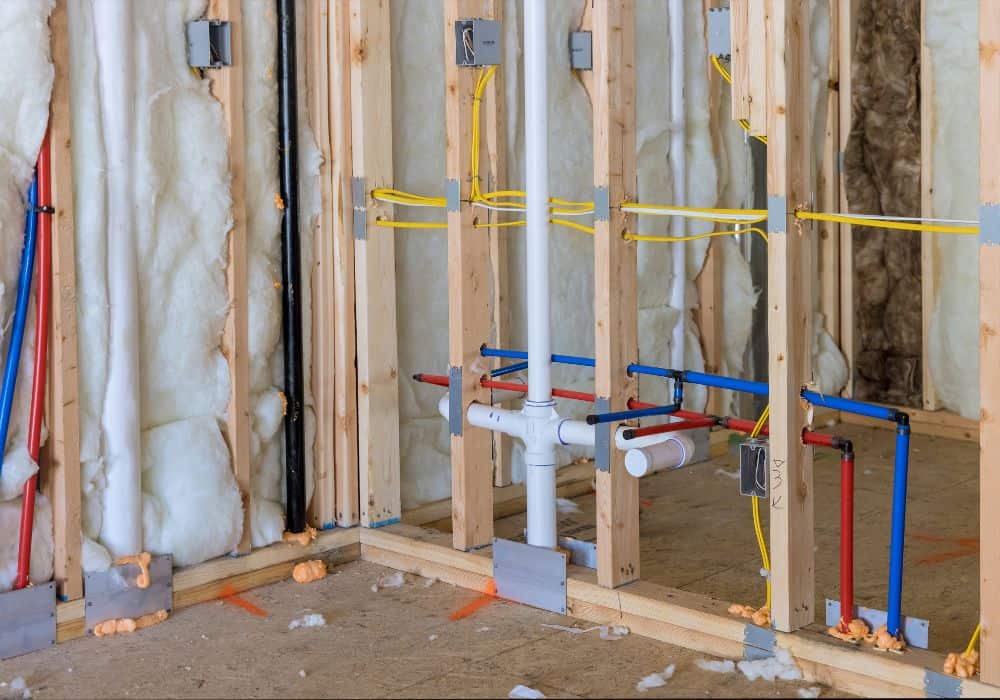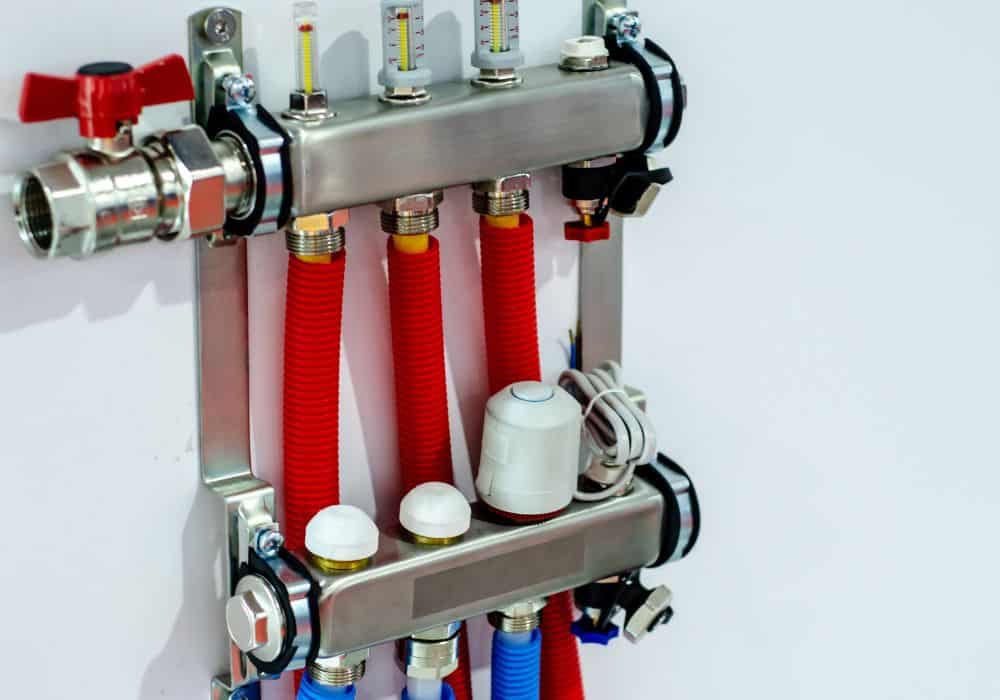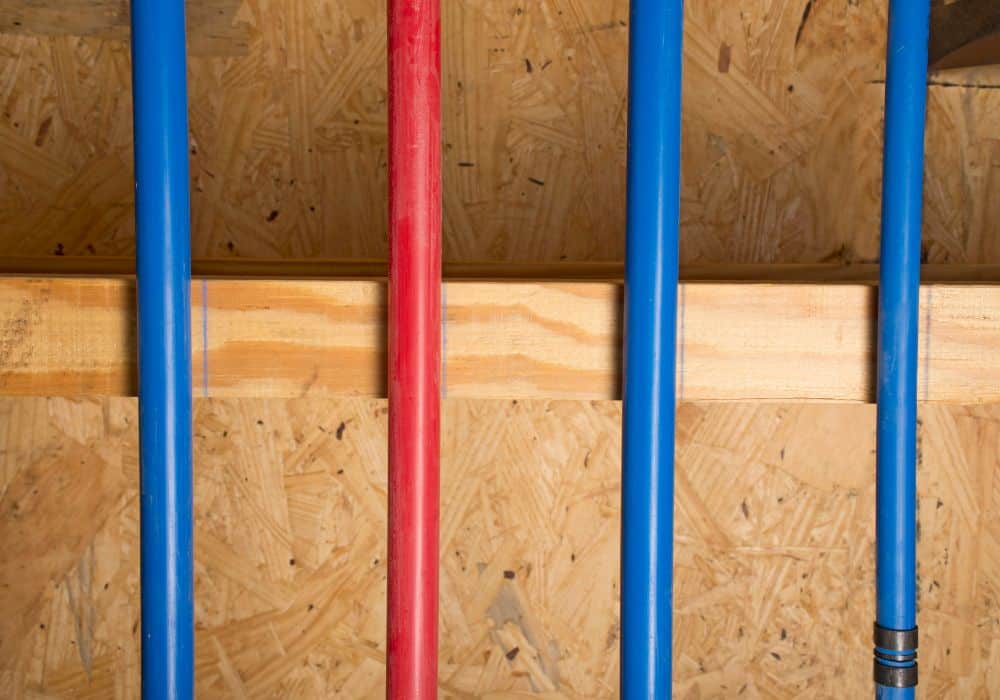Are you looking to install new (or replace) your hot water lines and/or cold water lines? Then you should consider getting cross-linked polyethylene tubing or PEX pipes.
Now I know your concern might be the amount you’ll have to pay for this material. That’s why I’ve prepared this guide to address what you (and other people)are asking: how much does PEX pipe cost?
What is the Cost of PEX Pipes?
According to Home Depot, the average price for PEX pipes ranges from $20 to $800. This boils down to about 50 cents to $2 per foot of tubing.
The above-mentioned figures ultimately depend on the following:
Pipe diameter. Measurements range from 1″ to 4″. Typically, 1/2″, 3/4″, and 1″ are used in residential projects.
Rolls range from 50 to 1,000 feet
PEX-A is more expensive than most PEX pipes because it is more resistant to burst pressure. It can handle readings of up to 500 psi, which make this flexible pipe more suitable in cold weather locations.
PEX-B, which is manufactured via moisture cure, has a coil memory that enables the pipe to return to its original shape. It is resistant to chlorine, which makes it ideal for areas supplied with chlorinated water.
PEX-C, which is manufactured through irradiation, is stiffer compared to other PEX pipes. Although it’s the cheapest of the three, it’s only recommended for short repairs since it is prone to cracking.

How Much Will it Cost to Repipe a Home with PEX Plumbing Systems?
The average cost of repiping a home with PEX ranges from $4,200 to $6,000. However, costs may go as low as $1,000 – to as high as $15,000 – depending on these factors:
- Pipe diameter. The wider the diameter of the pipe, the higher the cost of the PEX will be.
- House size. The bigger the house or the more stories a house has, the more PEX tubing the plumbers have to install.
For example, repiping a small 1-bathroom home will only cost about $1,500 to $2,500. A two-story, 3-bedroom, 2.5-bathroom home, on the other hand, will generate a higher cost of $5,000 to $7,000. - The number of plumbing fixtures. Fixtures such as faucets, toilets, showers, sinks, dishwashers, bathtubs, washing machines, or water heaters drain and/or deliver water.
The more fixtures you have at home, the more PEX pipes you’re going to need (and pay for.) - Pipe accessibility. The harder the access to the pipe is, the more expensive the cost of plumbing is. That’s because the professionals will need to put more time (and effort) into installing replacement pipes and removing old ones.
Unsurprisingly, replacing only exposed pipes will bring the cost down by 40-60%. - Of course, PEX pipes are best installed by professionals. But if you’re up to the challenge, you can do it on your own. All you just need to do is watch this PEX pipe installation tip for beginners video.
Other costs associated with PEX repiping include:
- PEX tool kits, $90 to $150
- Other specialized tools, $50 to $200
- Local planning or building permit, $70 to $400
- Plumber’s appearance during inspections, $50 to $150
More about PEX…
PEX was first developed in 1968 by Thomas Engle. The German scientist thought of a way to crosslink plastic via radiation, thus producing a suppler form of polyethylene.
PEX was eventually used to make pipes, the likes of which arrived in the US in the 1980s. Before they were used to supply water, they were initially utilized in radiant floor heating.
The tube, which was embedded in concrete, was installed to carry hot water that will then heat the room.
Granted PEX was already used to supply water in Europe in the 1980s, but this didn’t happen in the US for a few more years due to degradation concerns. After all, the earlier versions deteriorated after exposure to chlorine.
Leakage was another concern with earlier PEX tubes, for older fittings failed easily.
After spotting these issues, manufacturers added antioxidants to make the PEX sturdier for water supply use. Likewise, they also improved the fittings, thus making PEX less prone to leaks.
Thanks to these changes, PEX pipes have become more popular than ever. Nowadays, they come in a variety of colors that show their distinct use:
- Blue – cold water
- Red – hot water
- Orange – radiant/hydronic heating systems
- Purple – reclaimed water

What are the Advantages and Disadvantages of PEX Piping Materials?
If you’re still on the fence about repiping your home with PEX, then these pros and cons should convince (or deter) you from using this material.
Advantages
- Flexible
Being flexible, PEX pipes can easily wind through areas. You can actually use one long uninterrupted pipe to supply, say, your hot water heater. And since there are fewer connections (if there are any at all), PEX pipes are less likely to leak.
This flexibility also allows PEX to expand, which means it’s less likely to freeze (and crack) in extreme weather conditions.
- Longer Lifespan
Sturdy PEX pipes can last for a whopping 100+ years (most manufacturers offer a 25-year warranty too.)
Copper, on the other hand, only has a maximum lifespan of 50+ years.
- Less Heat Loss
PEX can keep your hot water hotter – for longer – because of its low thermal conductivity. As a result, you’ll save more on energy costs because of the reduced heat loss.
- Versatile
PEX pipes can be connected to metal pipes – granted you use the right fittings, of course!
- Affordable
As mentioned, PEX pipes only cost about 50 cents to $2 per foot. Although CPVC pipe is a little cheaper at 50 cents to $1 per foot, PEX is considerably more affordable compared to copper water supply lines. The latter will cost you a whopping $2 to $4 per foot!
- Easy (and Cheaper) to Install
Copper piping requires wall demolitions and soldering. This means it takes twice the time needed for installation, hence the expensive costs.
PEX pipes, on the other hand, maybe snaked into walls with minimal damage. At the most, the professionals would make 8-20 holes throughout the process. As such, plumbing contractors may only need one day to install these flexible plastic pipes.
Given the easier installation processes associated with this flexible plastic hose, labor costs are sure to be cheaper with PEX pipes.
- Corrosion-Resistant
Copper may be rigid and durable, but it’s prone to corrosion and small pinhole leaks due to its chemical composition.
The good news is that this won’t happen with PEX. Since it’s made of plastic, it is safe from rusting and potential chemical leaching. It’s also immune to mineral build-up, which means good water quality for your home.
- ‘Silent’ Water Flow
Metal pipes bring about a ‘water hammer’ noise. This happens when shutoff valves close on high-water pressure lines.
With PEX pipes, water flows silently because the material is flexible. That way, you don’t have to worry about the banging noise every time you’re using your water supply.

Disadvantages
- Not for Outdoor Use
Although PEX pipe material has numerous advantages, it may not be used outside or in other high-heat areas. That’s because PEX can degrade after prolonged exposure to UV rays.
- Requires Special Tools
PEX pipes are easy to install, but this process requires special tools. They will cost some money, but they’re still cheaper compared to the materials needed for installing metal pipes.
- Prone to Rodent Damage
Rodents will chew on PEX (and any other plastic material, for that matter.) So to prevent rodent damage, you need to set traps or put out rodent poison. If these don’t work, then you will want to call the exterminator quickly!
When Do You Need New Plumbing?
You may be hesitant to have your old pipes replaced with PEX (or any other material) because of the cost. But like many other things, you will need to have your house repiped when these arise:
- Old age. As mentioned, copper pipes only last for about 50 years. If your home is 50 years (or older), then you will need to get your house repiped.
Furthermore, you may need to have the pipes replaced earlier if they aren’t maintained well – or if you have hard water running through the pipes. - Signs of corrosion. Again, copper pipes are prone to corrosion. Though they may not be obvious, the following signs of corrosion mean that you need to have your pipes replaced: Discoloration or marks on the pipes/fittings, flaking, staining, brown, yellow, or brackish water, low water pressure, and leaky pipes.
- Presence of lead or polybutylene pipes. Homeowners, beware! Both pipes are known to leach toxic materials into your water supply.
Conclusion
PEX pipes cost 50 cents to $2 per square foot. Prices vary according to pipe diameter, length, and type.
All in all, repiping a home with PEX will cost around $4,200 to $6,000. These figures are dependent on pipe diameter, house size, number of plumbing fixtures, and pipe accessibility.
Do you want to know more about PEX pipes? Post your question below and I’ll be glad to answer it!
